List of Authors
>>About this blog
Recent blog post
|
[Nanako Tsukishima]
February 15, 2016 14:00
 The stage of the popular morning drama "Asaga came" is Osaka, but what is The stage of the popular morning drama "Asaga came" is Osaka, but what is  the popular Tomoatsu Godai who surpasses the leading role? the popular Tomoatsu Godai who surpasses the leading role?
There was a connection here in Chuo-ku.
This time, I will follow the footsteps in the ward of the fifth generation.
After the Meiji Restoration, the new government prepared for trade with other countries and provided money that had been inferior in the late Edo period.
It was necessary to improve the quality of international standards.
One of the five generations was entrusted with this Western-style money making.
As he proceeded with this work, he worked on the mining business to obtain gold and silver.
As a management office, Hironarikan was founded in Nakanoshima, Osaka, where his home was located in 1873.
In 1874, we also started the management of Handa Ginzan in Fukushima Prefecture, and as a base for this project, we entered 8-chome Tsukiji Irifune, Tokyo.
"Higashi Hironarikan" was set up.
Is it around the birthplace of St. Luke Hospital and Ryunosuke Akutagawa in today Akashicho?
In the drama, he took a boat and train from Osaka and walked through the brick street from Shimbashi to Tsukiji.
In the scene where the gas lamps turn on, the fifth generation said, "85 gas lamps illuminate the street between here and one ri."
There was also a word.
I understand the modern city of Chuo-ku, Tokyo, which has been modernized.
Five generations who have completed their 49-year-old life at a separate residence in Tsukiji without the help of recuperation.
The fact that the fifth generation, famous as the "man who made Osaka", had a connection with Tsukiji until the end.
I feel proud of it.
There is no turn in the drama anymore, but it reappears in my dream on the 22nd of this month.
I'm really looking forward to it.
Dean, you can meet your fifth generation 
[Dimini ☆ Cricket]
February 15, 2016 12:00
At the large hall of the Film Center of the National Museum of Modern Art, Tokyo in Kyobashi 3-chome, a retrospective feature of film director Kenji Misumi is featured.
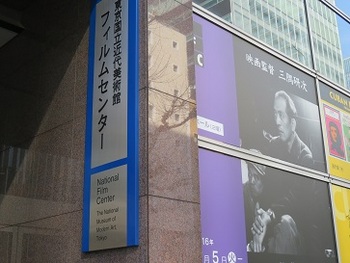
The period is until March 13 (Sun).
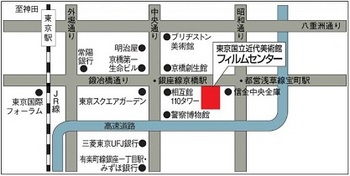
Director Misumi directed many works, mainly at the Daiei Kyoto Studio, but died suddenly at the age of 54 in 1975.
This project is a special feature of "History's largest" retrospective featuring 51 of the 67 films released by Misumi directed by Misumi and 19 films in charge of production of the TV drama "Mustic" series.
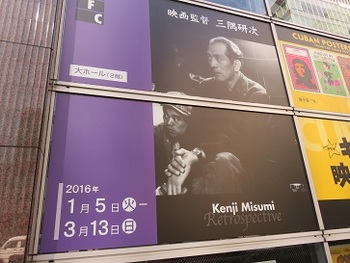
I watched "Lending a wolf with a child and lending arm" from 13:00 on the 13th (Sat)
This work is the first movie of a popular drama movie, and the story of a public servant, Tosaburo Wakayama, who became an assassin from the conspiracy of the Yagyu clan and went on a wandering journey with a young child, Daigoro .  
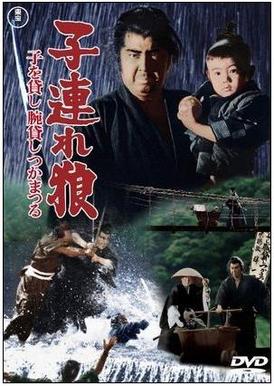
It's been a long time to watch the so-called entertainment period drama, but it seems that Misumi's features appear in the screen composition and detailed frame layout that emphasize light and shadow, and I also enjoyed the overexpression with a focus on drama.
Click here for the website of the National Museum of Modern Art, Tokyo "Movie Director Kenji Misumi" ⇒
http://www.momat.go.jp/fc/exhibition/misumi-2016-1/
     
[Koedo Itabashi]
February 15, 2016 09:00
You must go to the specified date and time and the designated place properly.
It's very difficult.
The 8th Chuo-ku Tourism Certification Test held on February 11,
I managed to take the exam.
Until now, there were times when the test started time was barely in time due to delays in transportation.
Due to heavy snow from the previous day, there were times when we headed to the venue on the sidewalk that became a vishabisha.
This time, on my own, one week before the test, suddenly acute back pain.
"I'm very excited,"
I'm in a situation where I can't move.
There are 7 consecutive exams, and it's going to be over.
However, while the pain continues, I am not going to take the exam.
"Guaaah" like Goku when Bejeta's attack.
I will be absent without permission on the day, but can't I help it?
Still, if I was resting for 3 days and 4 days, I could manage to walk.
It seems that painkillers and muscle relaxants have been effective.
I came to the 8th exam venue without being praised by anyone.
Test. It was interesting.
"Casari Riverside (Shintomi, Chuo-ku), Shigakukan, Kagami Shinmei Tomoryu, Shunzo Momoi, Edo Three Great Dojo"
I was expecting this trend to be questioned someday.
It was out.
It was worth attending just by solving this problem.
How was the other 99 questions?
Oh, yeah.
It wasn't easy to get the right answer.
Oh. Will you come over there?
The answer group that appears in the mind after reading and attacks it.
It was a fun 90 minutes to forget the pain in the lower back.
You can see the subject's smile with Nyari.
When I left the venue, a muscular older brother said, "I only understand Turley."
The official name of Turley is turret truck, right?
I learned from the question sentence.
This time, the question about Historic buildings was particularly impressive.
If it gets warm, go around the building and the town corner exhibition hall with one hand of the text.
It is most certainly remembered to actually go and check with your eyes.
The short distance between each building is also an attraction that you can easily go around.
[CAM]
February 13, 2016 14:00
The Toysler Memorial Hall of St. Luke's International Hospital
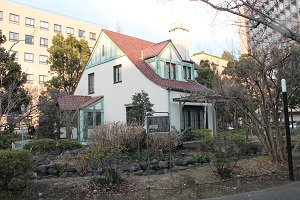
Location 1, Akashicho, Chuo-ku0(St. Luke International Hospital)
In 1933, the Toysler Memorial Hall was built at 19 Akashi-cho on the banks of the Sumida River as a missionary hall at St. Luke International Hospital.
The designer was an American architect J. V. W. Bergaminy, and the construction was performed by Shimizu Gumi (currently Shimizu Corporation). The skeleton of the building was a two-story reinforced concrete wooden building, which is rare for residential buildings in the early Showa era, and was a solid-style building reminiscent of a European mountain cottage.
Demolition work was carried out in 1989, and it was relocated and restored to its current location in February 1998. In restoring, we accurately record the construction technology and structural features at the time of its foundation, and use reusable materials as much as possible.
The exterior is a half-timber-style design that expresses pillars and beams outside. The interior is designed with a tuder and gothic style, and the interior of the building can be seen in the entrance hall and living room.
This building tells the history of St. Luke International Hospital and is a valuable cultural property that conveys a part of the history of Akashicho, which has been handed down since the Tsukiji Reservation period.
March, 2006 Chuo-ku Board of Education
Stone mark of the U.S.
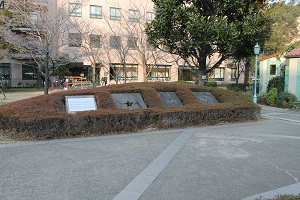 The U.S. Embassy was opened in Zenpukuji Temple, Motoazabu 1-6, Minato-ku by Harris in 1859, but was newly built in this area in Tsukiji's foreign settlement in December 1875. I adjusted it for the first time. Later, it was relocated to the current location of Akasaka in March 1890, and became the current embassy. The U.S. Embassy was opened in Zenpukuji Temple, Motoazabu 1-6, Minato-ku by Harris in 1859, but was newly built in this area in Tsukiji's foreign settlement in December 1875. I adjusted it for the first time. Later, it was relocated to the current location of Akasaka in March 1890, and became the current embassy.
As a result of the last relocation, eight stone markers of Komatsu stone were left in this area. The stone mark is engraved with three types of sculptures: a white head eagle, a star flag, and a star, and the white head eagle is an American national bird, and the 13 stars carved in the star flag indicate the early 13 states.
Three of the eight stone markers were donated to the American Embassy in Akasaka in October 1984 as a symbol of Japan-US friendship, and are now located in the front yard of the embassy. The remaining five stone marks have been registered as a Chuo Ward Cultural Property as a way to convey the settlement era of Tsukiji, three of which will be installed here and two in St. Luke Garden.
May, 1998 St. Luke's International Hospital
[CAM]
February 13, 2016 09:00
Catholic Tsukiji Church Cathedral
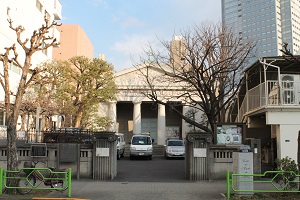
Location 5-26, Akashicho, Chuo-ku
The predecessor of the Catholic Tsukiji Church was the Inaribashi Church, which was opened in 1871 by Father Maran of the Paris Foreign Mission in 1871 by renting a merchant near Inari Bridge in the gunshot. In 1874 (1874), the priest borrowed Tsukiji Reservation No. 35.36 under the name of the missionary, and built a priest's house and a cathedral here. In 1878 (1878), a Gothic-style cathedral was dedicated here, which was destroyed by the Great Kanto Earthquake, and the current cathedral was rebuilt in 1927. The cathedral looks stone, but it is actually a wooden building, and the mural is painted with mortar.
The bell used in the old cathedral was made in Renne, France in 1876 (Meiji 9), and was named "Janne Louise of Edo" by Father Mareshal, the priest at the time, and is still kept in the church.
The church cathedral and bells are registered as Chuo Ward Cultural Properties as valuable cultural properties left in Akashicho, where the foreign settlement was once located.
March, 2001
Chuo-ku Board of Education
Roses and tulip sculptures in front of the roof
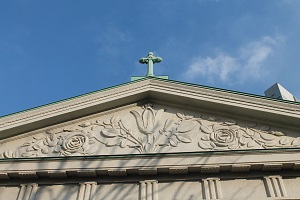 The Tsukiji Church Cathedral is designated as a Tangible Cultural Property inhabitant of a ward and a Historic buildings selected by Tokyo (page 152 of the Monoshiri Encyclopedia). The signboard is designated by the Historic buildings, which was selected by the Tokyo Metropolitan Bureau of Life and Culture, Tangible Cultural Property. The Tsukiji Church Cathedral is designated as a Tangible Cultural Property inhabitant of a ward and a Historic buildings selected by Tokyo (page 152 of the Monoshiri Encyclopedia). The signboard is designated by the Historic buildings, which was selected by the Tokyo Metropolitan Bureau of Life and Culture, Tangible Cultural Property.
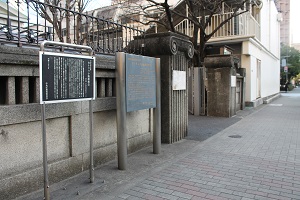
A monument to the birthplace of Xiaosei Gakuen, right in front of the gate. The background is Akashi Elementary School, with a little "gas streetlight pillar" (page 65 of "monoshiri Encyclopedia") on the left.
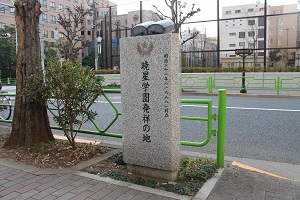
[Marsha Horiuchi of Edo]
February 12, 2016 16:00
February has passed the spring, and until the cherry blossom season, it was about to repeat three cold four temperatures.
At the Mitsui Memorial Museum, I went to see Hina doll and Hina tools at an exhibition that began on February 6.
First of all, about Hinamatsuri, this is March 3rd to pray for the health and well-being of girls.
It is also called a peach festival, one of the five festivals.
In ancient China, there is a custom of entering the river on the first snake day in March to purify the filth, which was introduced to Japan during the Heian period.
It was a unique event to celebrate with chirashi sushi, Hamaguri soup, Hina Arare, Hishimochi, and white sake.
Hina dan decorations seem to have been started since Genroku.
All the dolls were glittering, and the face seemed to match the word "rigful".
Above all, the 3 meters wide and 5-tiered hina decorations are wonderful, please take a look.
As I mentioned in the explanation, some dolls were Hina doll by craftsmen at Jukenten (around Nihonbashi 3-chome) from the Edo period.
It was written and it was a day when I once again felt that it was a town of merchants and craftsmen.
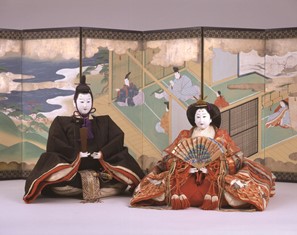
1895 (1895) Mitsui Memorial Museum Collection by the third generation Oki Hirazo
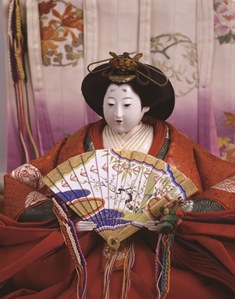
1934 (1934) Mitsui Memorial Museum Collection, 1934 by Heizo Gosei Oki
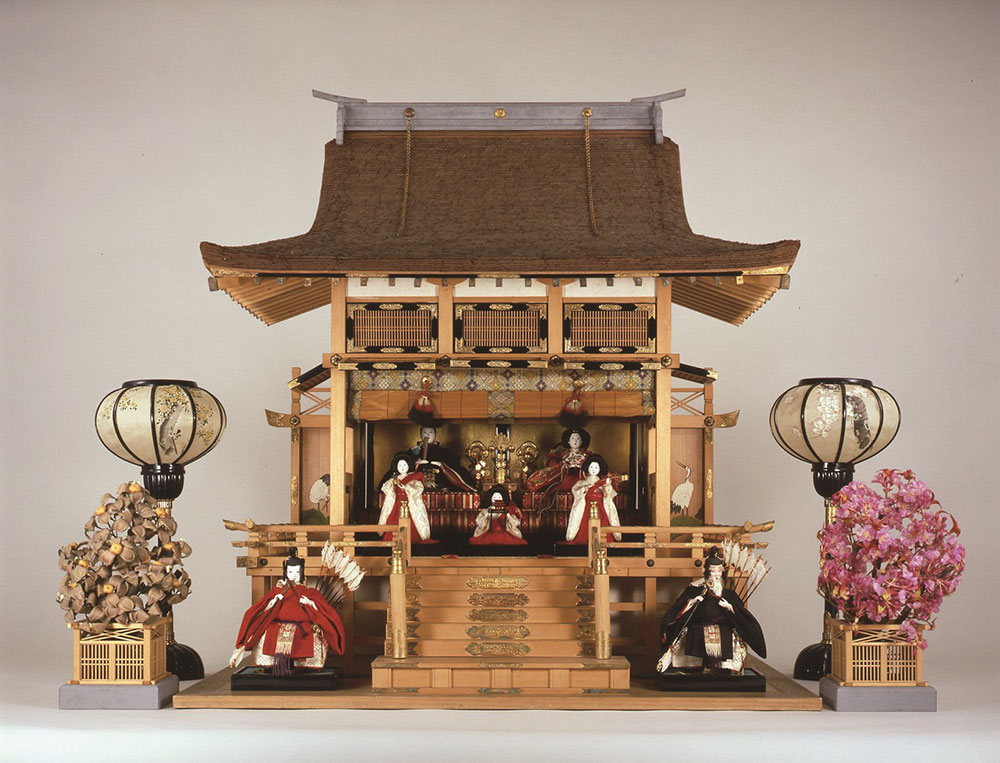
Shishinden Hina doll, 5th-generation Oki Heizo 1934 (1934) Mitsui Memorial Museum
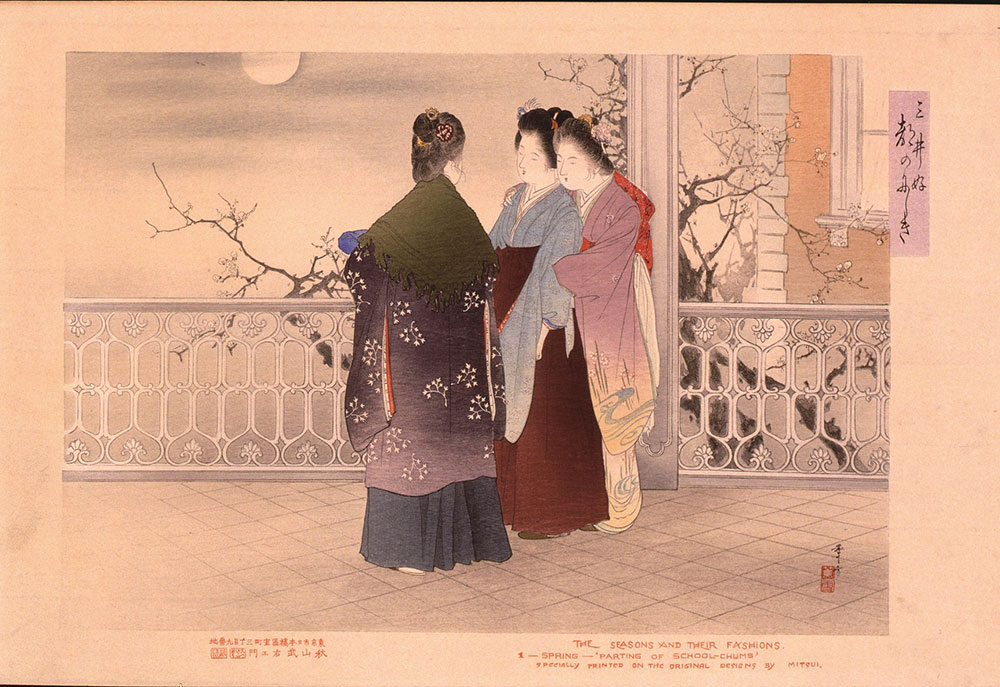
Toshikata Mizuno, Meiji period, Collection of the 20th Century Mitsui Memorial Museum
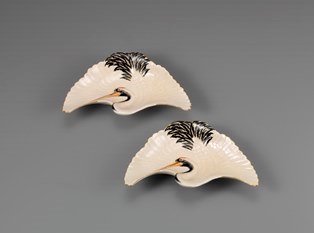
"Color-painted cranes" Singjukan-zo Modern Mitsui Memorial Museum Collection
In addition, Satsuma ware of the Mitsui family is also on display. Hideyoshi Toyotomi What brought the technology to Satsuma after his dispatch to Korea in his later years?
It is said that it was from a Korean potter. Speaking of which, Ryotaro Shiba's secretary (the work "color painting crane facing" in the photo is his work).
I remembered that there was a work that wrote about that, it's a heartwarming work, read it.
Mitsui Memorial Museum → The nearest station is Mitsukoshimae Station on the Ginza Line.
Click here for details http://www.mitsui-museum.jp/
※Each image is owned by the Mitsui Memorial Museum. Secondary use is strictly prohibited.
|
Links
|
![]() The stage of the popular morning drama "Asaga came" is Osaka, but what is
The stage of the popular morning drama "Asaga came" is Osaka, but what is ![]() the popular Tomoatsu Godai who surpasses the leading role?
the popular Tomoatsu Godai who surpasses the leading role?![]()
![]()










